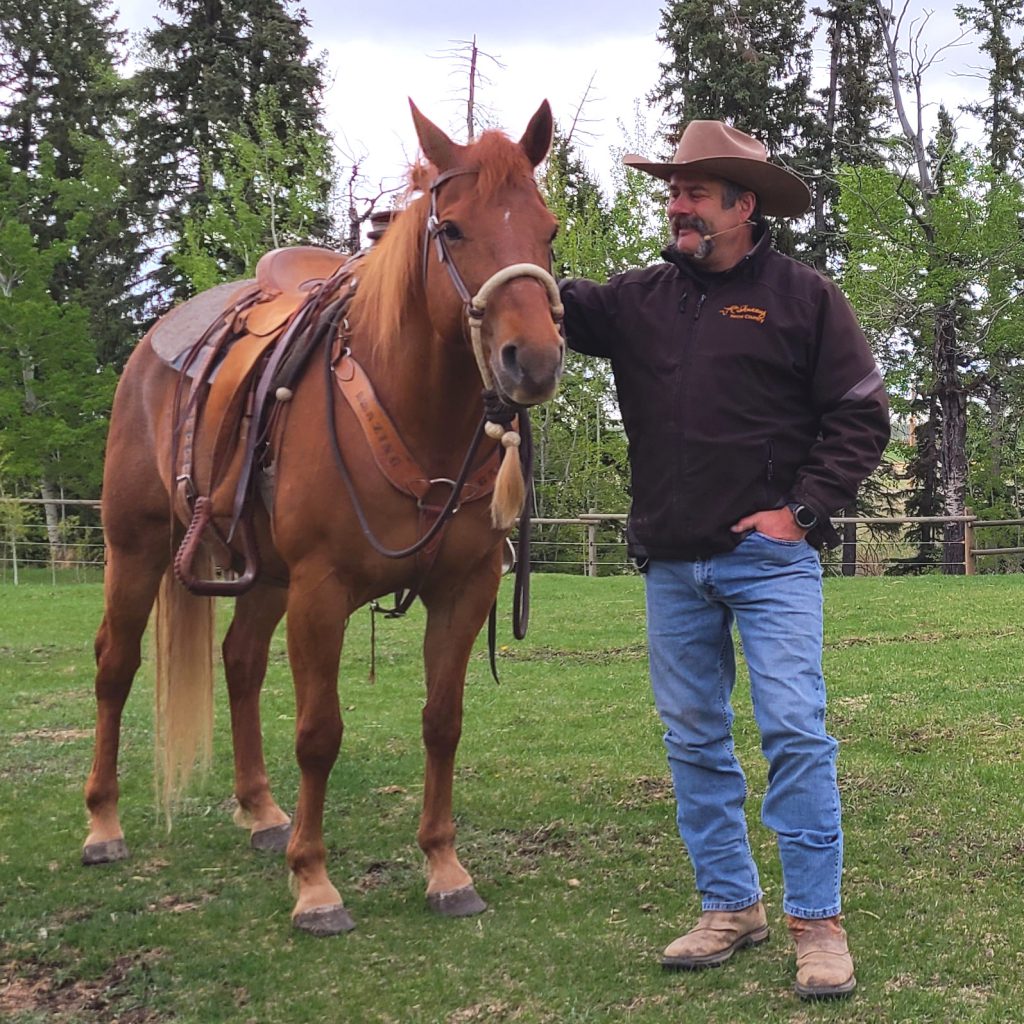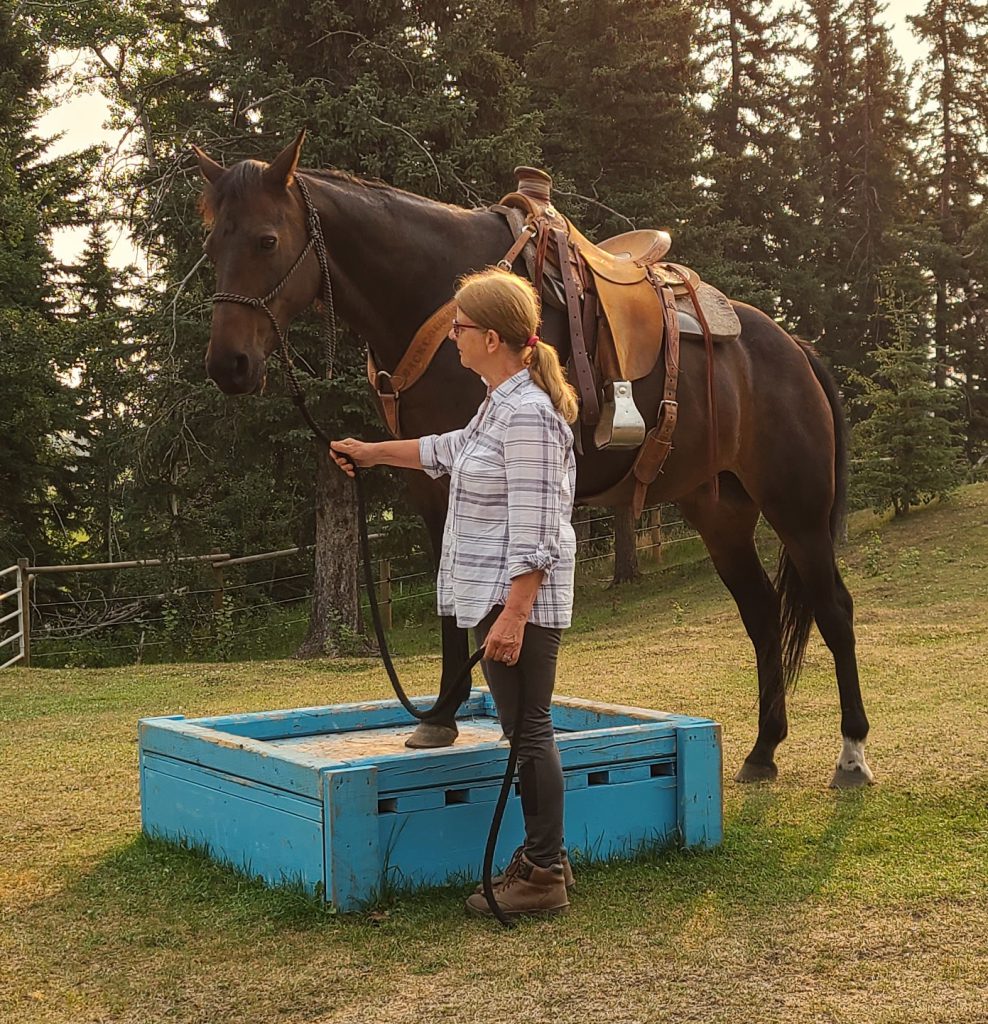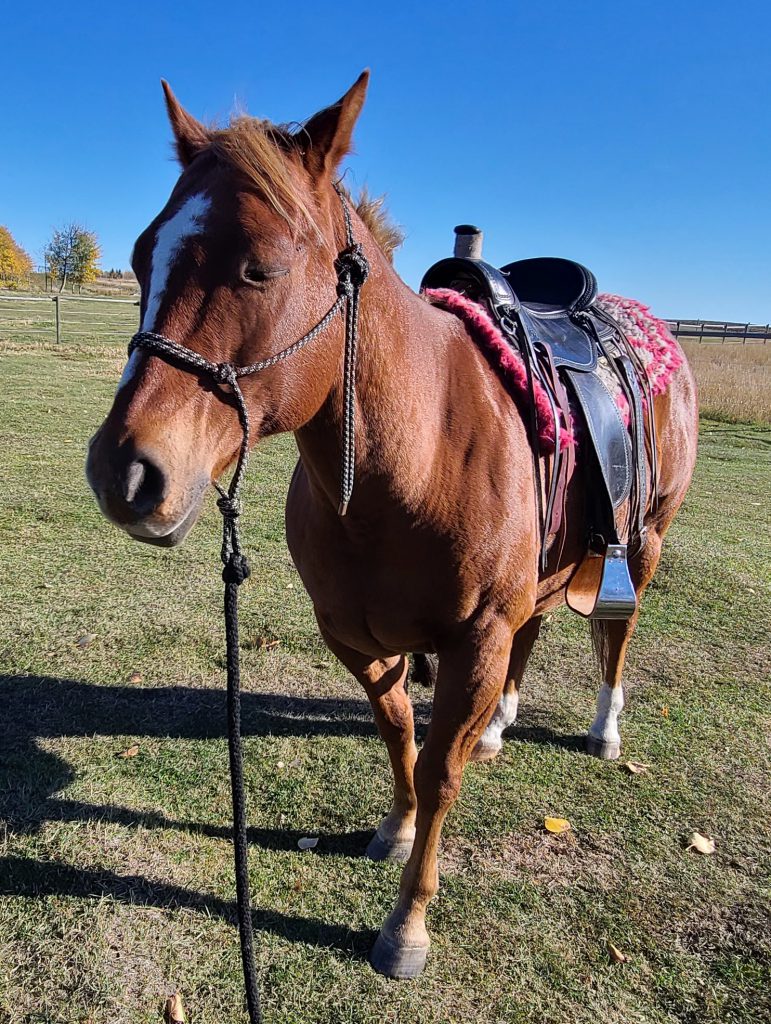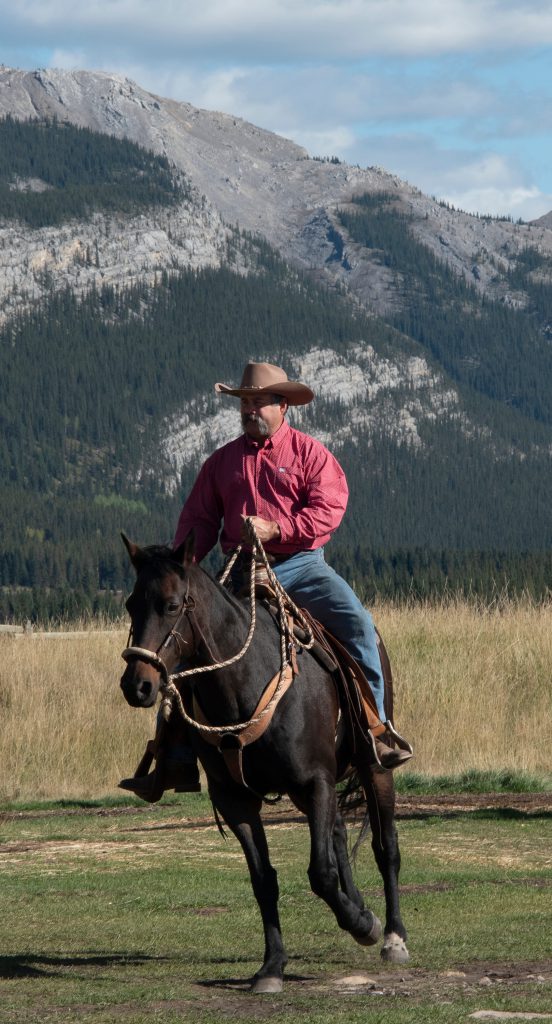In a recent presentation I had the opportunity to respond to someone’s query about a struggle with their horse. Since the same issue had arisen multiple times, she expected it to happen again. And it did. That got me thinking about behavior patterns – those events that happen every time. In this article we’ll dig into those undesired repetitive behavior patterns, the associations behind them and how to move forward.
Repetitions to Associations to Patterns
Horses and humans have many things in common, from muscles to bones to brains. How we think and move have similarities. Those similarities can help us to better understand horses. For the purpose of this discussion, we’ll spotlight these three common traits:
- The ability to make associations,
- Learning by repetition, and
- Pattern based behavior.
For practical purposes, let’s consider an association as a mental connection between an event and an action; a known stimulus produces a predicted thought. For example, when event A happens, we think B. As an example, the phone rings and we wonder who is calling. That association is likely fairly ingrained in our psyche; that is, it’s going to occur almost every time the phone rings.

Repetition is what causes the association to be made. Think about that time as a kid your mom told you, “Don’t touch that! It’s hot!” So what did you do? Touch it, of course! And burned your fingers. That doesn’t have to happen too many times before you’ve made an association: hot things burn your fingers.
Learning by repetition or making associations is only negative – or positive, for that matter – if you consider it to be. It’s well known that repetition is a key to learning and therefore it’s widely used in teaching and training. It’s generally accepted that we form associations after repeating things three times. In human relations, we’re taught to repeat in our mind the name of someone we’ve just met three times so we don’t forget it. We’ve had many dog trainers in our clinics (horses and dogs just go together!) and in discussions we find the same thinking: repeat it three times. What I’ve found – which seems to make complete sense – is that the simpler the association, the less repetitions required to learn it.
A pattern is a collection of two or more responses or actions that occur in the same order every time. Stated simply: the association is the thought and the pattern is the actions.
And horses are absolute experts at making basic associations. I consider them better than humans at this, because they don’t add layers of emotions, morals and perceptions to every thought like we do. Horses might surprise you at just how well they can make associations.
As an example of a very simple association, I feed my old horse, Ty, a daily mixture of supplements to help him with his arthritis. He is generally fed this tasty stuff (and he does love it) at the same time every day. It took him only two times of being fed at 0630 to make the association. And now we see him at the fence every day at 0630. A more complex association might be the following: I graze the pasture in sections separated by electric fences. When the horses see me walking to one end of the fence, they have learned that I’m going to move the fence and make the area larger. This means more grass to eat! Add this to the horse’s incredible ability to pick up on our focus and intent, and I see the horses get excited as I round the corner, well before I even head for the fence. It’s entertaining and also serves to illustrate some amazing capabilities of the horse that we can use in our training and riding.
In Practice

The obstacle course is a great venue for demonstrating association-repetition-pattern behavior. When it’s working for us, we encourage it. When it’s not, we need to be aware of what is happening and change the cycle before a pattern is made. It goes like this:
- You walk your horse up to a platform in a groundwork exercise.
- She associates the platform as something threatening.
- She then ducks behind you to avoid putting a foot on it.
- You repeat the same exercise the same way with the same result.
At this point, we need to make a change. I’ll repeat that for emphasis: We need to make a change. We’re the leaders. The horse has no way of judging right or wrong; they simply perceive the platform as something undesirable and naturally avoid it. An action that is entirely sensible and intelligent. If you had a choice about how to go from point A to B, with one choice being a nice path on the grass and the next up and down a set of stairs you didn’t trust, which would you choose?
It’s often said that the definition of insanity is doing the same thing over and over and expecting a different result. An example of this is a very commonly used measure: lunging. This is something that unfortunately many folks have been taught to do whenever the horse isn’t doing what they want. Don’t get me wrong here – sending a horse out can be very productive in the context of relationship building and balance.
But here’s the simple truth: if we felt we had to lunge for a problem more than ONE TIME, it’s NOT working. If lunging was a cure, the problem would be gone and we would ever lunge again. But that isn’t the case, is it?
To avoid being insane, we need to make a change in how we’re asking. What we do depends on the struggle the horse is having. Maybe they simply view it as a harder way of doing something that clearly has an easier alternative. Maybe they don’t feel they need to because they’re above you in the herd. Maybe they’re petrified of it. We have many positive ways of supporting you and your horse in these moments and we work those in our clinics (and you’ll see them in the Following Under Pressure video series as well).
Set up for Success
We’ll ensure we never set the situation up just in order to demonstrate a failure: “Hey, look. When I go to mount my horse is going to walk off. Watch this…. See? He walked off!” It is important that we work in proactive thinking versus reactive thinking.
Reactive thinking generally puts us in a mindset of blaming. An analysis of our reactive mindsets might be:
- Who is leading? Anyone? Are we accepting responsibility for what happened?
- What did we do to prevent it? Are we helping or just complaining?
- Have we tried being proactive or are we “punishing the wrong thing”?
- Is it the problem or just the symptom of a bigger issue?
- Is it a trained expectation and now I’m simply responding?
- Is it our fear they’re moving away from? Is it a fear issue for the horse (scary thing)?
- Have we accepted the undesired action as a normal event? Do we avoid seeking a remedy because because we’ve accepted it as normal?
When we set up a situation, we do so with the intent of changing the outcome versus dealing with it after it happens.
What do we do?
The very first step is to understand the root cause of the association your horse is making. What I’ve found is that folks are great at recognizing the undesired action and trying to change the action after the fact, but in order to positively affect the situation, it’s important that we discover the root source. Think about a young child crying. You can either choose to stop the crying because it annoys you OR you can choose to discover why the child is crying and remedy the situation.
For example, if your horse walks off at the mounting block is it because they:
- Think you’re going riding, so they take the initiative and go?
- Have anxiety with something above / behind their eye?
- Are nervous of the mounting block itself?
- Fear the confinement of having something blocking one side?
- Are sensitive about the saddle or stirrup moving?
It only makes sense that when we eliminate the cause of the problem, the problem goes away.
Changing Associations and Patterns

Here’s a story. My horse, Ditch, was tormented in training over ten years ago. Once in a while, remnants of that horrible experience resurface. There have been a few times when I’ve thought about picking up the right rein, and he swings his head up and to the left. His association in that moment is that that rein means getting his face pulled off. His action is to respond by tightening muscles to avoid that. To change his association I have done two things:
1. Work at showing him how the rein is a tool to cause a release of tension, a calm mind and to follow my focus and energy. This is, in most cases, the sole function of the rein.
2. NEVER, EVER meet his expectation by pulling on a rein. If my actions serve to confirm his expectation, we will not realize the change we desire.
It stands to reason that the best way to avoid having to deal with undesired patterns is to avoid creating them in the first place. I’ve worked with a few clients that have horses that bucked before every ride. Their response was to put them out in a circle until they quit bucking, and then go for a ride. In some cases, this has been going on for years. What’s the pattern that the horse understands?
- Saddle goes on.
- I run in a circle.
- I buck because I’m expected to.
- We go riding.
Again, solving the root cause of the bucking – or whatever the action is – is what must happen. Punishing a horse for doing what you didn’t want is an act of cowardice, not leadership. When we behave like that, we are expecting the horse not only to change the pattern without our assistance, but to make some huge leap in logic. We exacerbate the problem when we repeat our negative responses.
We use repetition because it does allow us to institute patterns. That said, we need to ensure that our repetition – those actions that form patterns – are always positive. So as we stated before – repeating to expect a different result is insane. In the case in question, it came down to showing the horse how to release to the feel of the saddle and cinch while in motion (NOTE: this is not lunging) and presenting ourselves in the same way we will when we ride. We repeat the exercise that alleviates the problem through a series of progressions. We cease repeating the exercise that caused it and cease repeating punishments for learned behavior.
Going great? Don’t overdo it.
We can work to alleviate the issue and repeat what we did. Be careful not to continue the exercise too long at the risk of frustrating your horse, “Why do we keep doing this? I thought I did it right?”
A great example is trailer loading. When we’ve worked a few times at overcoming an element of trailer loading – and I mean an element, not necessarily the final product – we need to quit. The reason is that our horse needs some time to process what happened, in just the same way as we think more clearly about something after we’ve slept on it. If our horse is really struggling with the interface of ground to black mat as they step up, then once they are able to stand quietly with two feet up, it’s likely time to quit. Work at another progressive step on another day.
Be patient. Learned behavior can take time to change. If a horse has been responding the same way for a long time, it generally will take some time for them to learn a new pattern. This comes when we work to change their expectation; to change the initial association. Human psychology is no different. Have you ever made resolutions on New Year’s Day? How many did you follow through on? In order to make changes in our own behavior, we need to change our associations. Sitting down at the computer no longer is associated with a donut, but instead with a healthy smoothie. Repeat that and the association will be made. But it might take time.
Our Own Expectations
There’s another side to this as well.
How much of the pattern is based on our actions? Are we, in fact, the cause? If we expect our horse is going to respond to a stimulus in a certain way, they are more likely to do so. Many times, through our intent we actually ask for the thing we don’t want.
A great example is a desire for your horse to stay standing when asked to whoa. But instead of us whoaing – and by that I mean, we relax, lower our energy and sit deep, we tense up and wait for the horse to move so we can say NO. The very fact that we’re focusing on GO instead of presenting a WHOA is a super common reason a horse walks off. How confusing it must be for them! Our presentation says GO but we get mad when they do.
A Helpful Exercise
If you have any association / pattern based issue with your horse, the first step is to do a bit of detective work. Before you grab a halter and head out though, do this:
Grab a piece of paper (or use a spreadsheet) and make a table. As the headings put these:
| Issue | Trigger | What do I first notice? | What I have been doing. | Things I will change. | How did it go? |
Here’s how we’ll fill in the table:
Issue: A description of the problem.
Trigger: The stimulus that happens right before the undesired action.
What do I first notice? What is the very first thing you notice that isn’t right? Note that this might happen WAY BEFORE the event. Remember that patterns are a series of individual items. Some horses may wear their heart on their sleeve and clearly indicate every thought. Others are stoic. Watch for minute changes. Maybe your horse’s eyes go distant and you lose their focus. It’s a tiny thing, but very important.
What I have been doing: Your current response after the event.
Things I will change: List here both what you will change in your presentation AND what positive proactive steps you will try.
How did it go? What was the result?
Here’s an example:
Issue: My horse bucks when he first moves after I saddle him.
Trigger: Motion
What do I first notice: When I tighten up the girth, my horse’s head goes up and he seems tense.
What I have been doing: Just getting mad and sending him in a circle.
Things I will change: I will show my horse how to release to pressure in the girth area and go through all the progressions of saddling (see our video) to ensure that, at every step, my horse can relax. I will commit to not circling my horse and help instead. I will stay calm and exhale while tightening the cinch to be a model for my horse. I will ensure I work eye-to-eye with him so I know his focus is on me and he knows I’m there to help.
How did it go? When I worked the cinch area with the pool noodle, I found a very sensitive spot between his front legs. I showed him how to release to that pressure at a whoa and then in a walk, as I stayed in front to maintain eye contact. I’ll try the same method with the cinch tomorrow.
What this does is shift our thinking from reactive to proactive. Reactive forces us to stay in negative patterns. Proactive gets us out of them. When we work in a proactive relational style, we can changing negative associations quite easily. We ensure that the stimulus that causes the association is connected to another response. In the previous case, our rider is working on this association: when there is pressure at the girth, my horse releases tension and focuses on me.
I’m here to help.
Of course, in order to help our horses make better associations, we need to know what to try. It would be impossible to put into print, or into a video, every step to working through every horse’s and person’s combination of struggles. Marketing wizards are out there to convince you otherwise – to buy their remedy, but you might find yourself searching and searching before you find a remedy that works.
Instead, and to quote famed engineer, W. Edwards Deming, “There is no substitute for knowledge.”
Instead of learning methods to apply to particular situations, we can learn horses; how to relate, communicate and help. Our possibilities then, are endless, because we – as horse people – are the ones that create them.

The fundamental focus of my style of relational horsemanship is to offer honest, factual and functional knowledge of the horse. Knowledge that you can use to apply to all facets of horse training from communication to problem solving, to create your own possibilities. Knowledge gives us the confidence to try something new. And succeed. Or screw it up. And learn from that. That’s life, but it’s experience you won’t get in any other way.
We work through many horse and people struggles in every clinic. We do the same online, in private sessions and in the webinars. Our clinics and online services are available to everyone. If you’d like personal help with specific struggles, just get in touch. It’s what I’m here for.
The starting point when working a horse through trouble spots can really become clear to us when we discover what basic associations our horses have. We can create them. We can change them. If necessary, we can remove them altogether. It just takes a little bit of time and a strong desire to help.
Scott Phillips
September 2021
